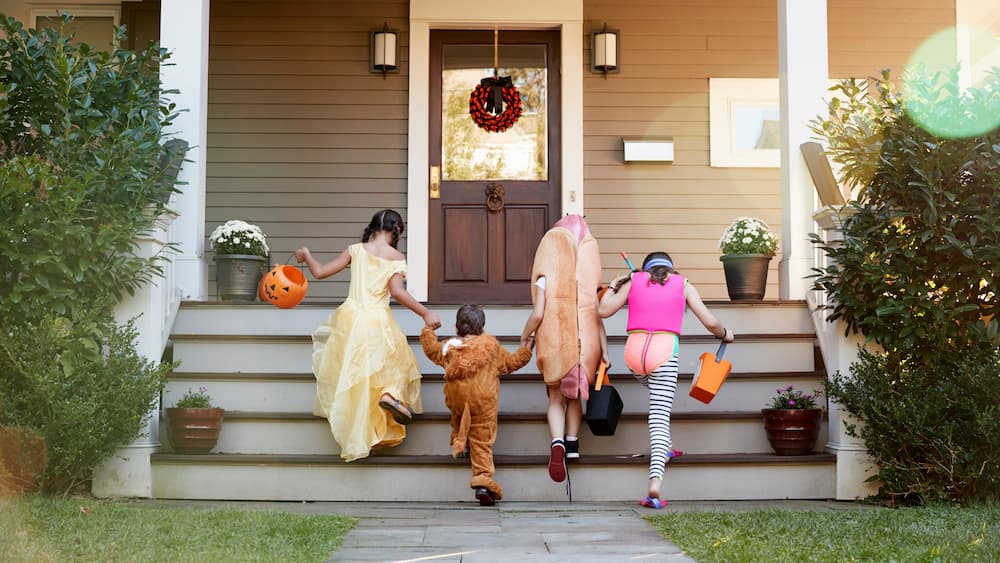The irony is almost poetic.
A night that once proclaimed, “Death has been defeated,” has become the one evening our culture most celebrates fear.
Halloween, as the world knows it now, is a masquerade of ghosts and ghouls, a carnival of darkness marketed in orange and black. Yet if you trace its roots back through time—past the fog of folklore and the glitter of commercialism—you find a surprising truth. Halloween was once profoundly Christian.
In the early centuries of the faith, followers of Christ did not flinch at the subject of death. They stared straight through it. Persecution had made eternity more real than safety. When they gathered to remember the martyrs—their friends and family who had been killed for confessing Christ—they called it All Hallows’ Eve, a holy vigil that began on October 31 and led into All Saints’ Day on November 1. It was the beginning of a three-day remembrance called Hallowtide: All Hallows’ Eve, All Saints’ Day, and All Souls’ Day.
It wasn’t morbid—it was triumphant. The Church would light candles, sing psalms, and tell stories of the faithful who had gone before them. They celebrated because, as Jesus said, “I am the resurrection and the life. Whoever believes in me will live, even though they die.” (John 11:25) Halloween, literally All Hallows’ Eve, was the opening chorus of that eternal song.
The modern inversion began slowly. As Christianity spread across Europe, local customs merged with the faith—some harmless, others hollow. By the time medieval folk traditions blended in, the holy vigil had been diluted by superstition. The Reformation fractured how saints and prayers for the dead were viewed, and later centuries of secularism finished the job. What remained was a shell: costumes without the communion, shadows without substance.
The Industrial Revolution and the migration of Irish and Scottish communities to America carried fragments of the old observance—a mix of Celtic harvest festivals and Christian remembrance. In the melting pot of the New World, commerce soon found an opportunity. Candy replaced candles; costumes replaced prayer; and the spiritual question of death was replaced by entertainment that flirted with it. What was once an altar became an aisle at Target.
But memory is a stubborn thing. Deep inside the collective conscience, we still sense that something sacred lingers behind the night.

To reclaim Halloween is not to pretend the darkness isn’t real; it’s to remember what the early Church already knew: darkness doesn’t get the final word.
The saints and martyrs weren’t naïve. They knew suffering, torture, and loss. But they also knew that their blood was not the end of their story—it was the seed of eternity. When they kept vigil on All Hallows’ Eve, they weren’t playing with death. They were mocking it. Their candlelight was defiance.
Somewhere along the way, the Church forgot that holy courage. The world began telling the story louder—and we let the echo replace the origin. But the truth has never changed: Halloween is the front porch of heaven’s victory.
When we hand out candy to children dressed as skeletons and superheroes, perhaps we should whisper the older story: that bones were once the battlefield where Christ declared His final victory. That resurrection is not mythology—it is history.
Imagine if believers saw this night again for what it was meant to be: an invitation to remember that we live between two realities—one fading, one eternal. Imagine homes lit not with fear but with faith; neighborhoods where the light spilling from doorways is more than decorative—it’s declarative.
Halloween can still preach, if we let it.
It can remind us that the tomb is empty, that the saints are not gone, and that the veil between heaven and earth is thinner than we think—not because spirits roam freely, but because God’s Spirit never leaves His people.
The night we once surrendered to fear could once again become a night of remembrance. We could tell our children about the saints who stood unflinching before lions, the martyrs who sang while chains clinked, the ordinary believers who lived with eternity in their eyes. We could light a candle not for superstition, but for gratitude—because the communion of saints is unbroken.
To awaken to truth is to see beyond costume and caricature. Halloween was not born in darkness—it was born from defiance of it.
And if the Church remembers that, even one small light on one small porch becomes an act of rebellion.
Death once had a night.
Now, it has a deadline.





